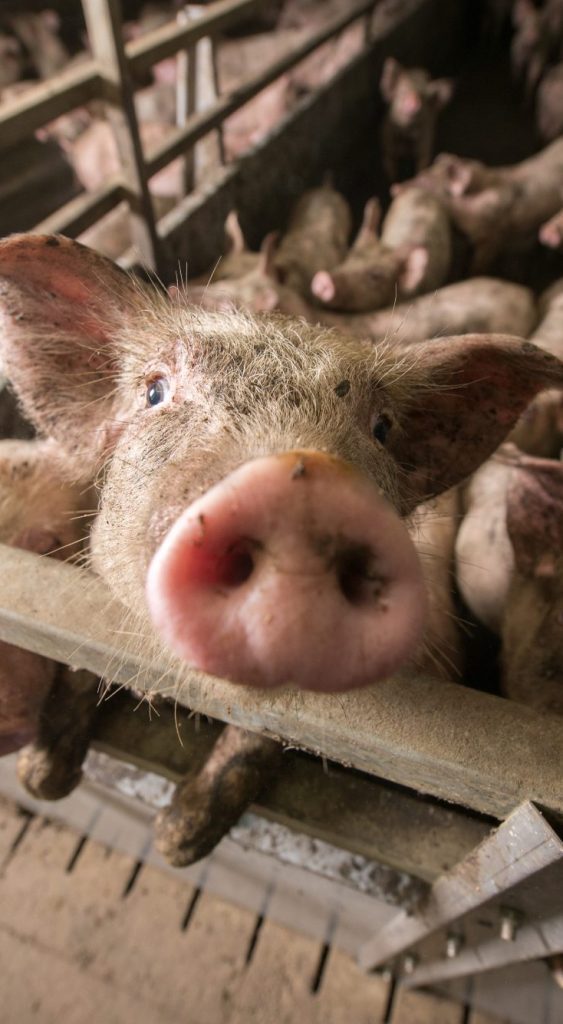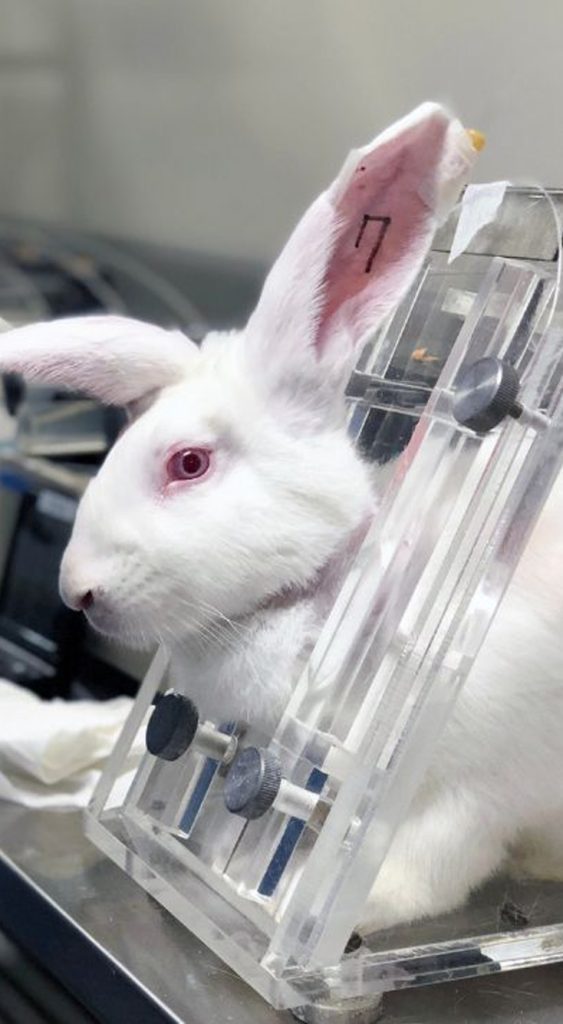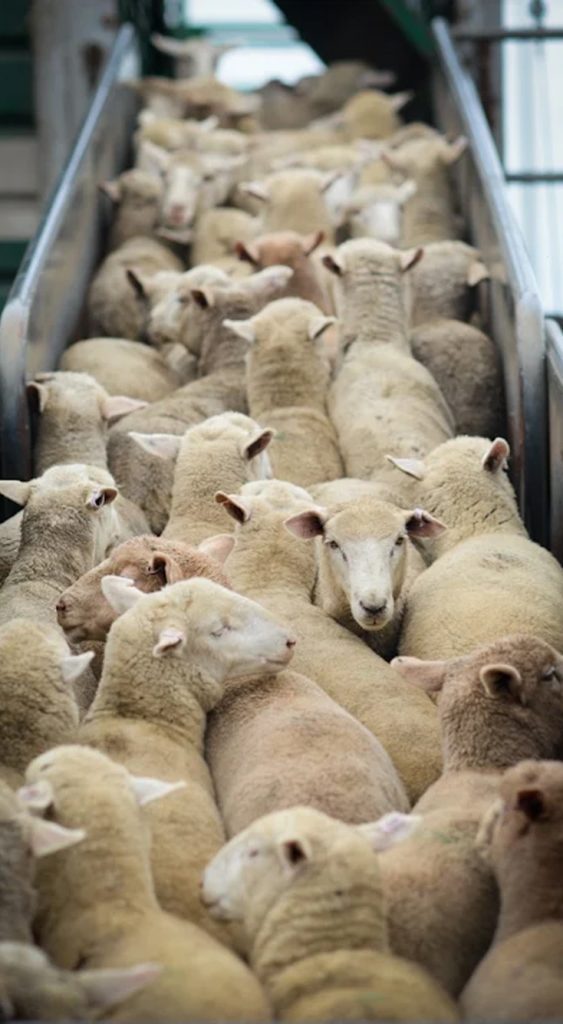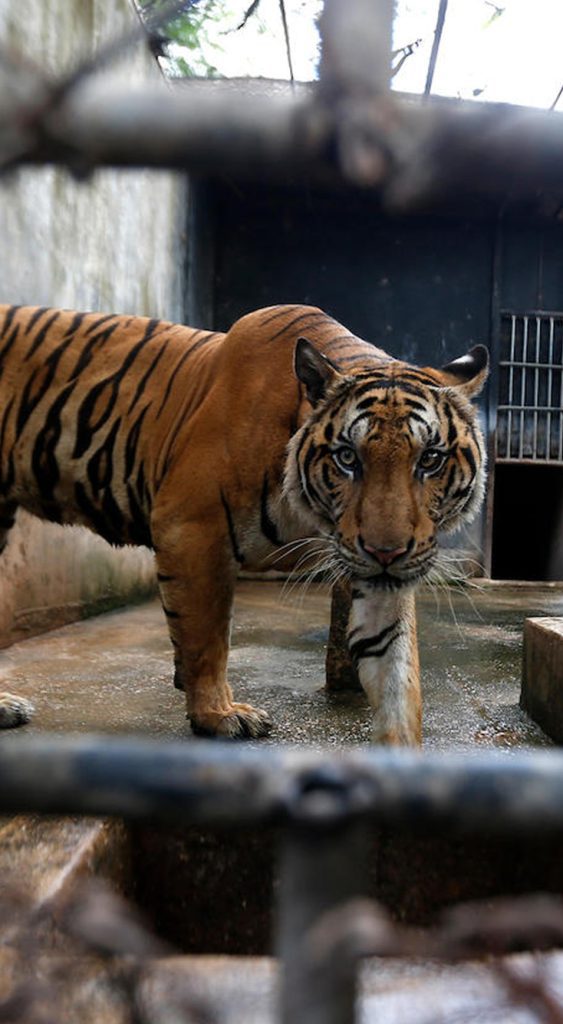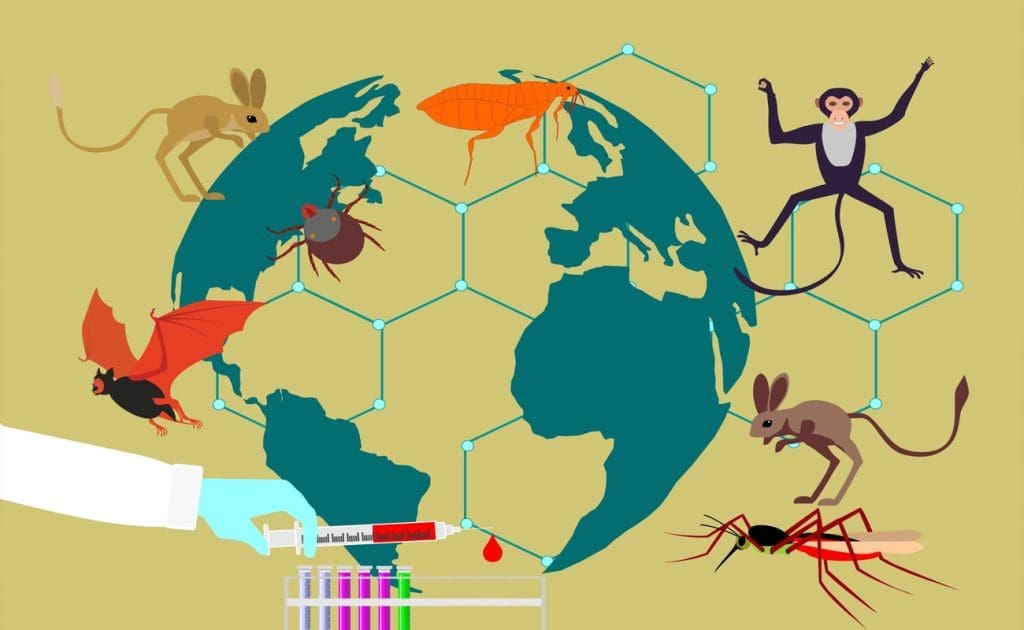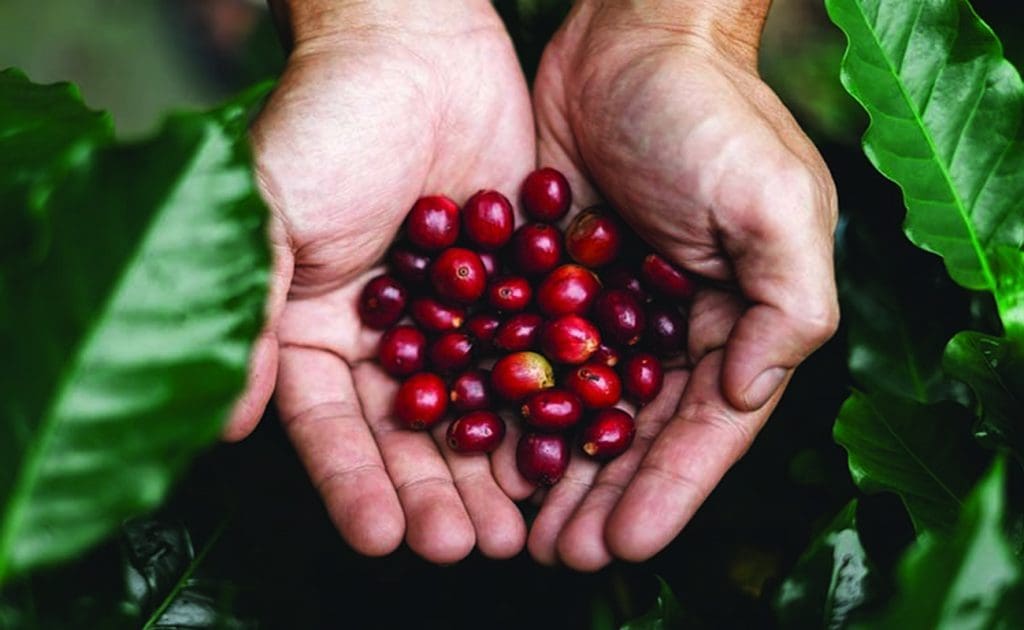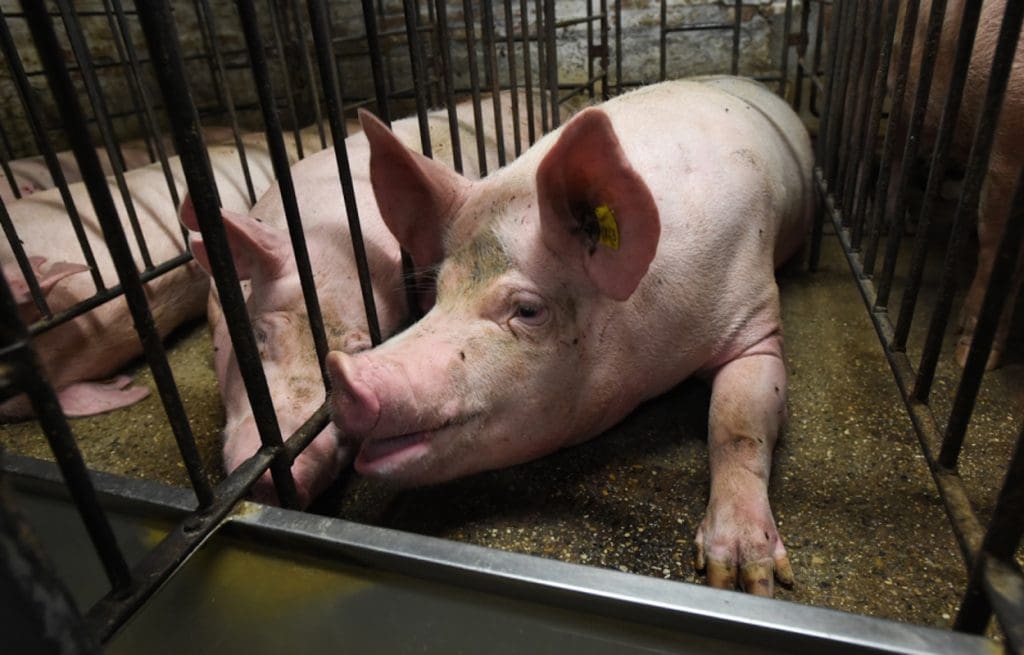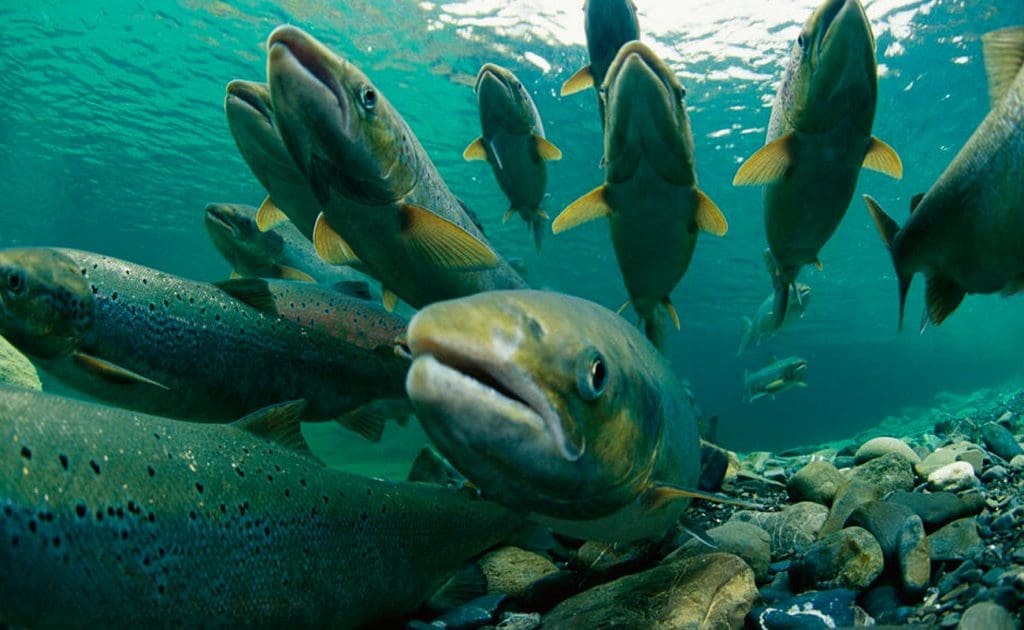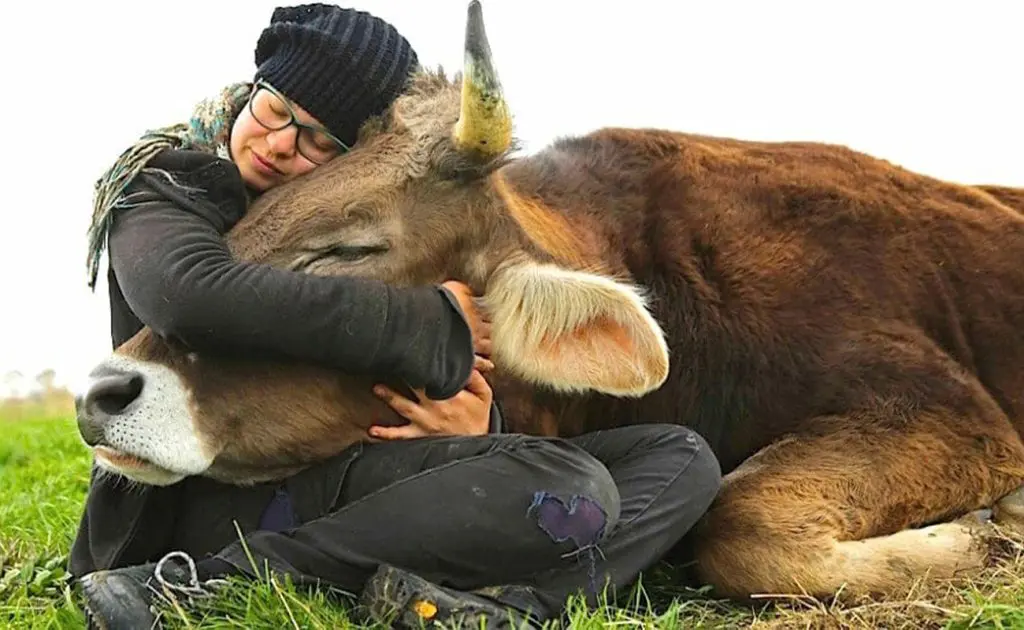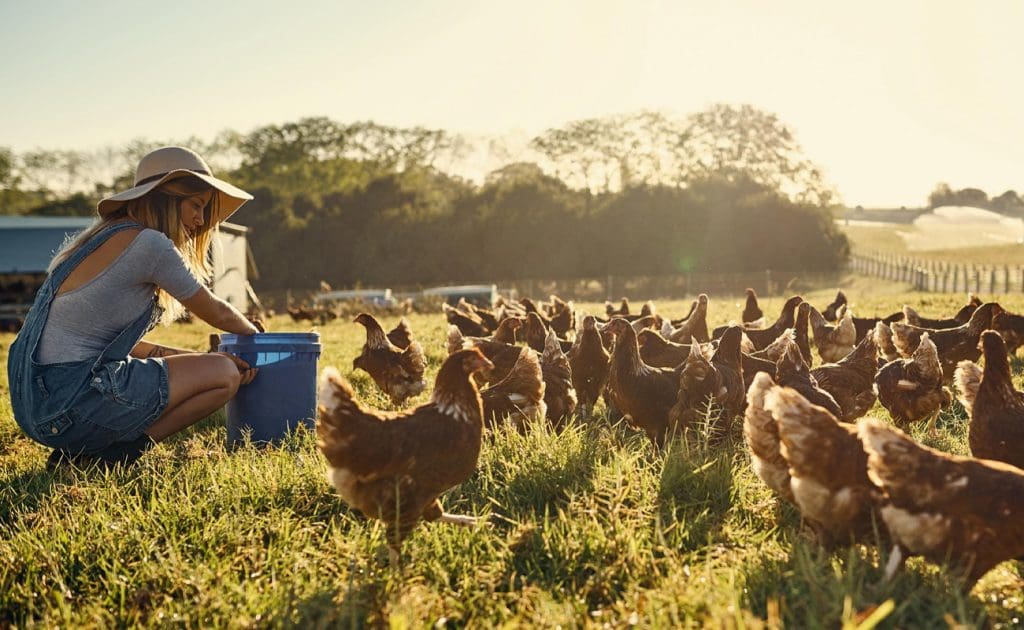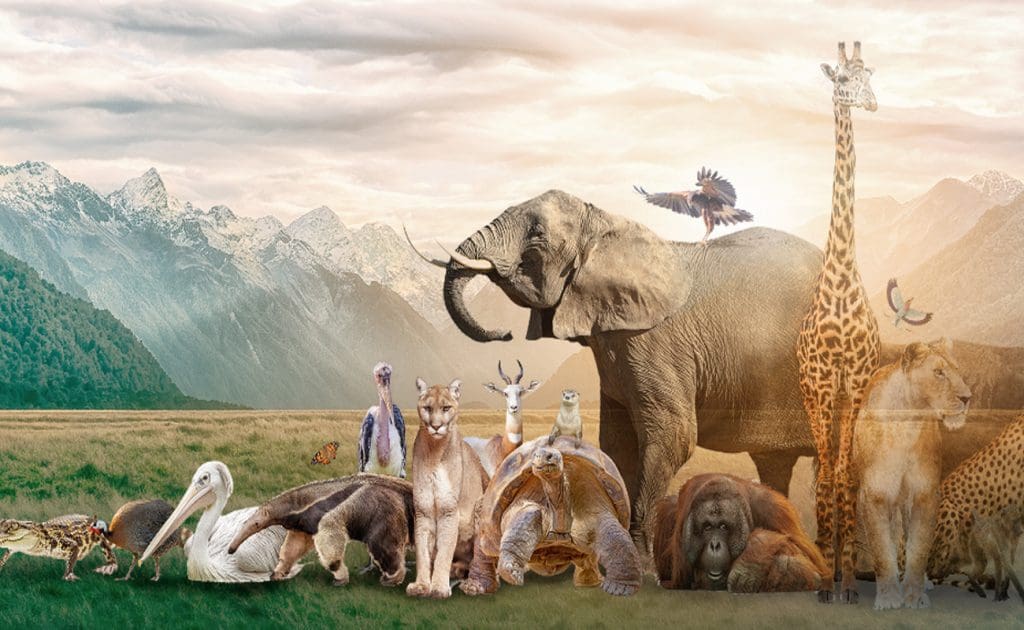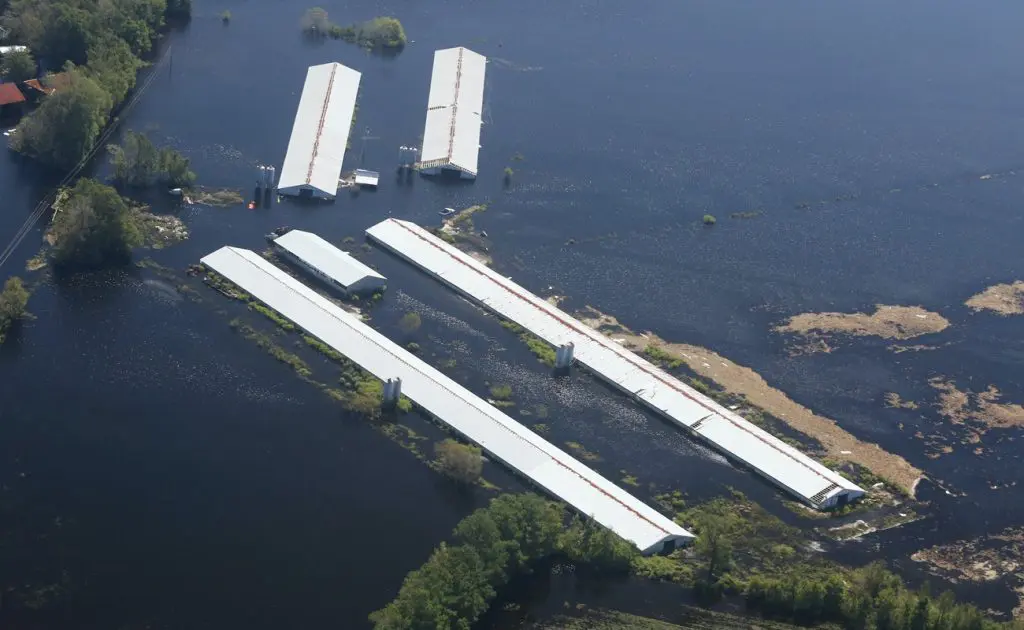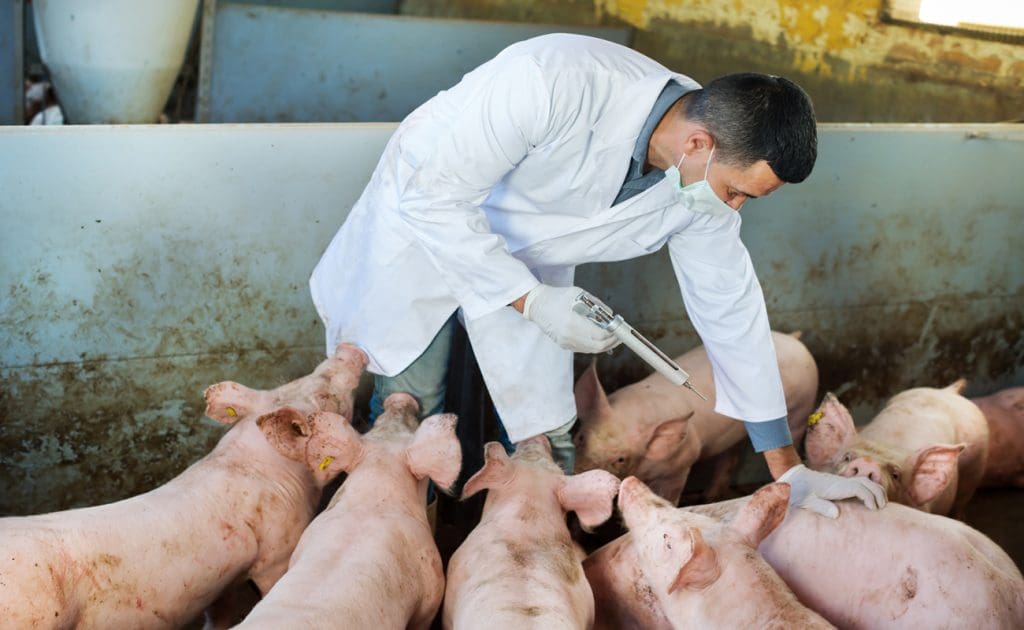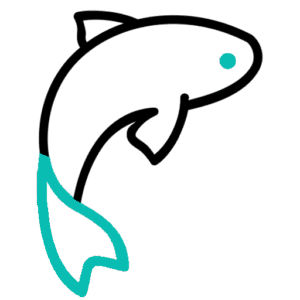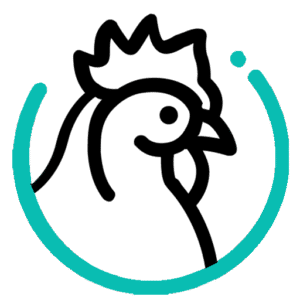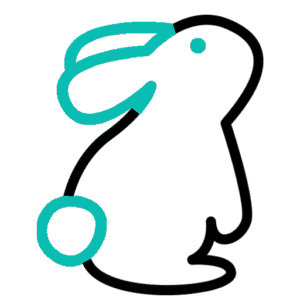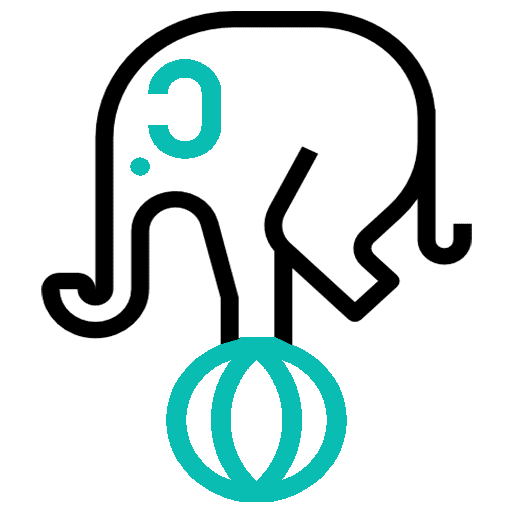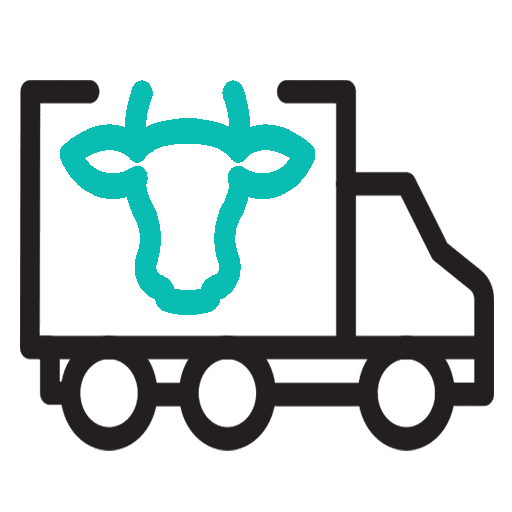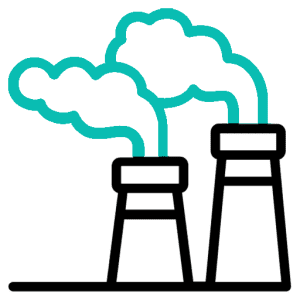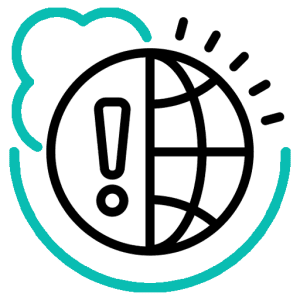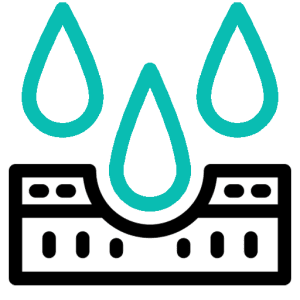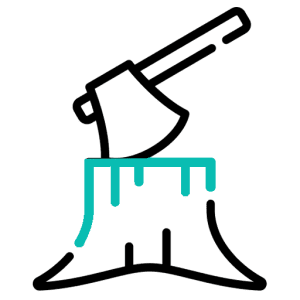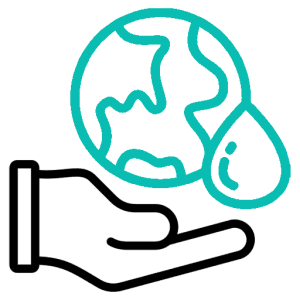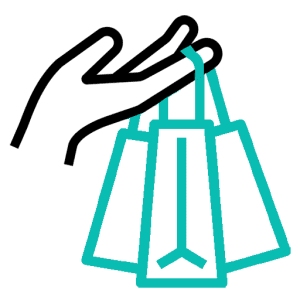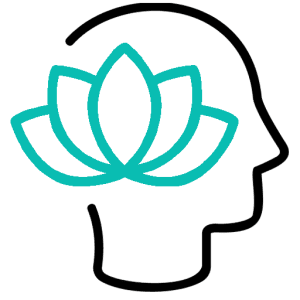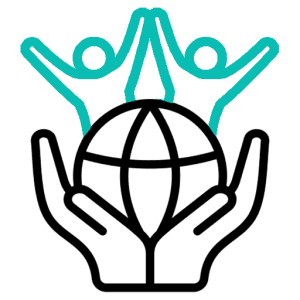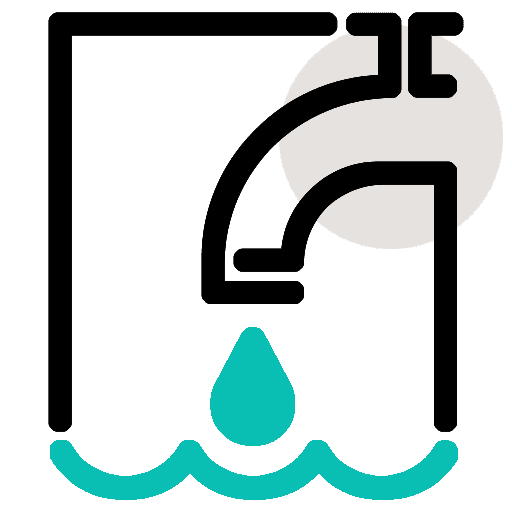
15 000 liitrit
veega toodetakse vaid ühte kilogrammi veiseliha – see on järsk näide sellest, kuidas loomakasvatus tarbib kolmandiku maailma mageveest. [1]

80%
Amazonase metsade hävitamisest põhjustab veisekasvatus — peamine süüdlane maailma suurima vihmametsa hävitamise taga. [2]
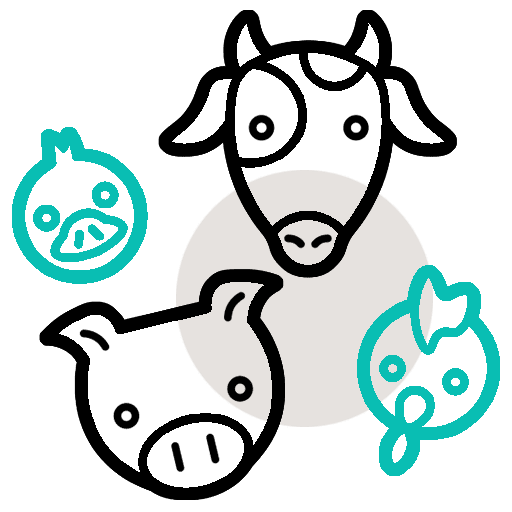
77%
ülemaailmsest põllumajandusmaast kasutatakse loomade ja loomatoitude jaoks — ometi annab see vaid 18% maailma kaloraažist ja 37% valkudest. [3]

KHG
Tööstuslik loomakasvatus toodab rohkem kasvuhoonegaase kui kogu ülemaailmne transpordisektor kokku. [4]

92 miljardit
maailma maismaaloomadest tapetakse toidu jaoks igal aastal — ja 99% neist kannatavad tehasepõlludel. [5]

400+ liiki
mürgiseid gaase ja 300+ miljonit tonni sõnnikut tekib tehasepõlludel, mis mürgitavad meie õhku ja vett. [6]

1,048 miljonit tonni
teraviljast toidetakse aastas loomadel — piisavalt, et lõpetada mitu korda ülemaailmne nälg. [7]

37%
metaaniheidet tuleb loomakasvatusest – kasvuhoonegaas, mis on 80 korda tugevam kui CO₂, põhjustades kliimakatastroofi. [8]
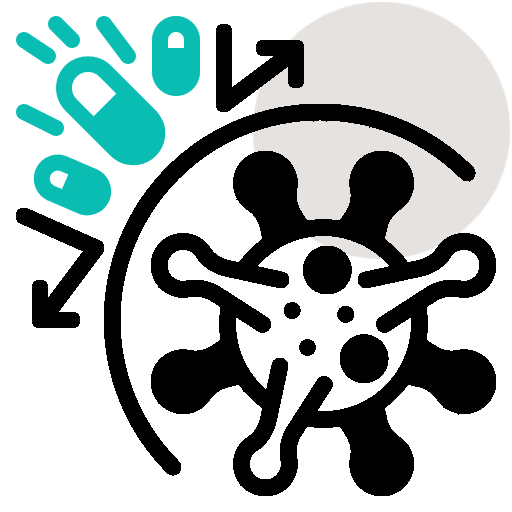
80%
antibiootikumidest ülemaailmselt kasutatakse tehismajandatud loomadel, soodustades antibiootikumiresistentsust. [9]
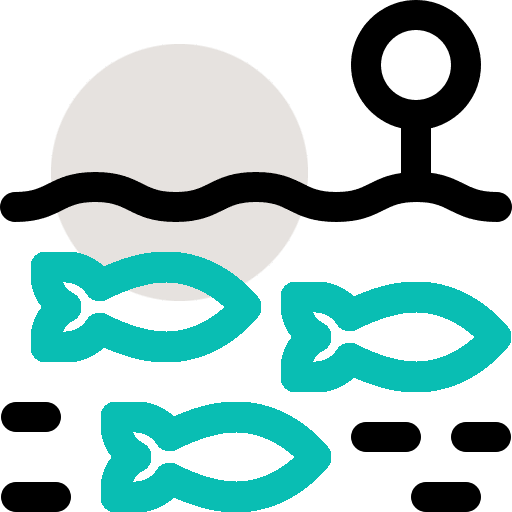
1 kuni 2,8 triljonit
Merekalma loomi tapet igal aastal kalapüügi ja vesiviljelusega — enamik neist ei ole isegi loetud loomakasvatuse statistikasse. [10]
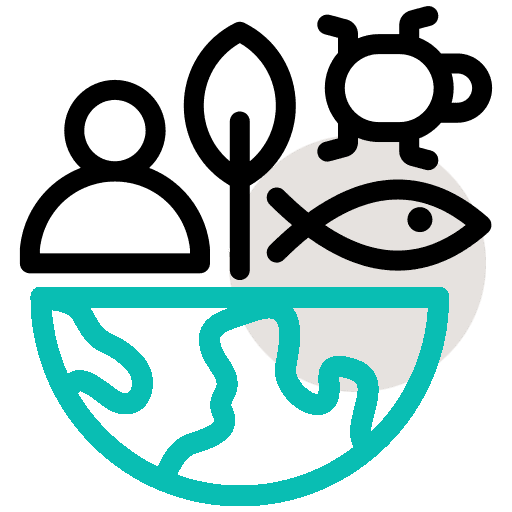
60%
ülemaailmsest bioloogilise mitmekesisuse kadumisest on seotud toidu tootmisega — kusjuures loomakasvatus on juhtiv tegur. [11]

75%
ülemaailmsest põllumajandusmaast saab vabastada, kui maailm võtaks omaks taimsed dieedid — vabastades ala, mis on sama suur kui Ameerika Ühendriigid, Hiina ja Euroopa Liit kokku. [12]

Mida me teeme
Parim, mida saame teha, on muuta oma söömisharjumusi. Taimne dieet on kaastundlikum valik nii meie planeedi kui ka mitmekesiste liikide jaoks, kellega koos elame.

Päästa maa
Loomakasvatus on juhtiv põhjus bioloogilise mitmekesisuse kadumisele ja liikide väljasuremisele kogu maailmas, kujutades endast tõsist ohtu meie ökosüsteemidele.
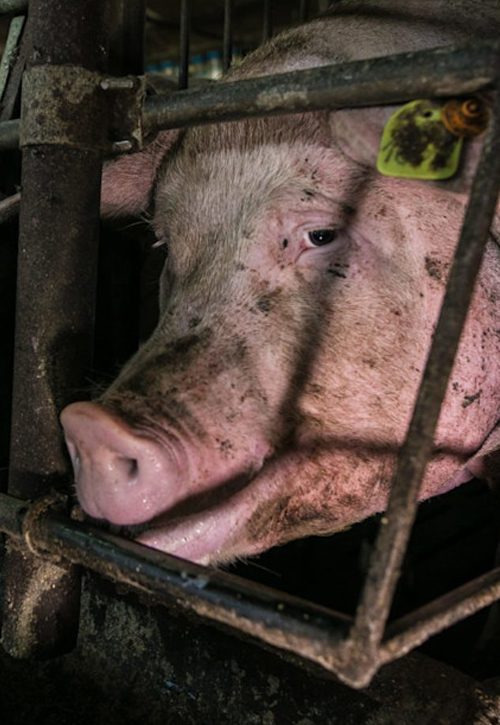
Lõpetage nende kannatused
Tehasepõllundus tugineb tugevalt tarbijate nõudlusele liha ja loomse päritoluga toodete järele. Iga taimne eine aitab vabastada loomi julmuse ja ärakasutamise süsteemidest.

Õitseb taimedel
Taimsed toidud ei ole mitte ainult maitsvad, vaid ka rikkad oluliste vitamiinide ja mineraalide poolest, mis suurendavad energiat ja edendavad üldist heaolu. Taimse dieedi omaksvõtmine on tõhus strateegia krooniliste haiguste ennetamiseks ja pikaajalise tervise toetamiseks.
Loomafarmide julmus:
Kus loomad kannatavad vaikselt, Meie saame nende hääleks.
Loomade kannatused põllumajanduses
Kuskil, kus loomad on kannatanud või nende hääl jääb kuulmata, astume me sisse, et võidelda julmusega ja toetada kaastunnet. Töötame väsimatult, et paljastada ülekohtut, saavutada püsivat muutust ja kaitsta loomi, kui nende heaolu on ohus.
Kriis
Tõde meie toiduainetööstuse taga
Toiduainetetööstuse taga peitub tegelikkus näitab varjatud reaalsust loomafarmide julmusest, kus miljardid loomad kannatavad iga aasta tohutult. Lisaks mõjule loomade heaolule, põhjustab tööstuslik loomakasvatus ka tõsist keskkonnakahju, alates kliimamuutusest kuni bioloogilise mitmekesisuse kadumiseni. Samal ajal aitab süsteem kaasa kasvavatele terviseriskidele, sealhulgas rasvumisele, diabeedile ja südamehaigustele. Taimse toitumise valimine ja säästva eluviisi omaksvõtmine pakub võimast lahendust — vähendades loomade kannatusi, kaitstes planeeti ja parandades inimeste tervist.
LIHATÖÖSTUS
LOOMAD, KEDA TAPPETAKSE LIHA TARVIS
Loomad, kes on tapetud nende liha pärast, hakkavad kannatama juba sünnist saadik. Liha tööstus on seotud mõningate kõige raskemate ja ebainimlike kohtlemisviisidega.

Lehmad
Sündinud kannatustesse, lehmad kannatavad hirmu, isolatsiooni ja jõhkraid protseduure nagu sarvede eemaldamine ja kastreerimine – kaua enne, kui tapmine algab.
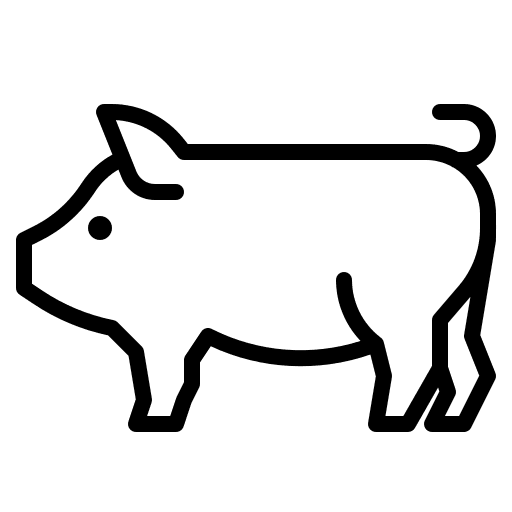
Sead
Sead, intelligentsemad kui koerad, veedavad oma elu kitsastes, aknatutes farmides. Emasloomad kannatavad kõige rohkem — korduvalt tiineks tehtud ja puuridesse piiratuna, mis on nii väikesed, et nad ei saa isegi pöörata, et oma järglasi lohutama.
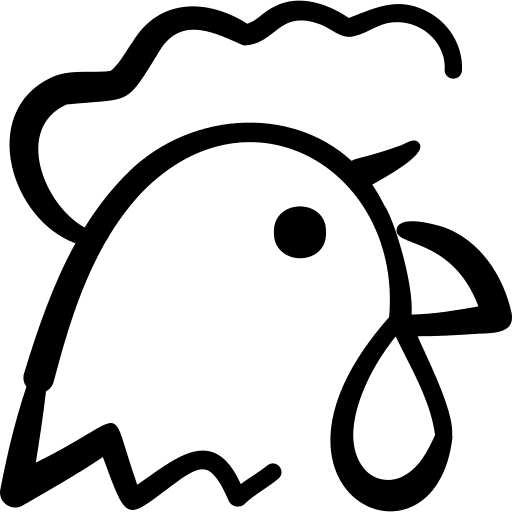
Kanad
Kanaalid kannatavad kõige rohkem tehasepõllunduse all. Tuhandetena topitakse nad räpaseisse lattu, neid aretatakse nii kiiresti kasvama, et nende kehad ei suuda sellega toime tulla — põhjustades valusaid deformatsioone ja varajast surma. Enamik neist tapetakse juba kuue nädala vanuselt.

Tallid
Tallad kannatavad valulike vääratuste all ja neid rebitakse emadest lahku vaid päevad pärast sündi – kõik liha nimel. Nende kannatus algab liiga vara ja lõpeb liiga vara.

Küülikud
Küülikud kannatavad julma tapmise all ilma seadusliku kaitseta – paljusid pekstakse, käsitletakse valesti ja lõigatakse kõri läbi, samal ajal kui nad on veel teadvusel. Nende vaikiv piin jääb sageli nägemata.

Kalkunid
Iga aasta surevad miljonid kalkunid julma surma läbi, paljud neist surevad transpordi ajal stressi tõttu või isegi keedetakse tapamajades elusalt. Vaatamata nende intelligentsusele ja tugevatele perekondlikele sidemetele kannatavad nad vaikselt ja suures ulatuses.
ÜLE JULMUSE
Lihandustööstus kahjustab nii planeeti kui ka meie tervist.
Liha keskkonnamõju
Loomade kasvatamine toiduks tarbib tohutul hulgal maad, vett, energiat ja põhjustab suurt keskkonnakahju. ÜRO toidu- ja põllumajandusorganisatsioon ütleb, et loomsete toodete tarbimise vähendamine on kliimamuutustega võitlemiseks hädavajalik, kuna loomakasvatus moodustab ligi 15% ülemaailmsetest kasvuhoonegaaside heitkogustest. Tehasefarmid raiskavad samuti tohutult veeressursse — sööda, puhastuse ja joomise jaoks — saastades samal ajal Ameerika Ühendriikides üle 35 000 miili veekogusid.
Terviseriskid
Loomsete toodete tarbimine suurendab tõsiste terviseprobleemide riski. WHO klassifitseerib töödeldud liha kantserogeeniks, suurendades käärsoole- ja pärasoolevähki haigestumise riski 18%. Loomsetel toodetel on kõrge küllastunud rasvade sisaldus, mis on seotud südamehaiguste, insultide, diabeedi ja vähi — Ameerika Ühendriikides surmapõhjuste —ga. Uuringud näitavad, et taimetoitlased elavad kauem; üks uuring näitas, et nad olid 12% vähem tõenäoliselt surema kuue aasta jooksul võrreldes lihasööjatega.
PIIMATÖÖSTUS
PIIMANDUSE TUMEDAM POOL
Iga piimaklaasi taga on kannatuste tsükkel – emlehmad on korduvalt tiined, ainult selleks, et nende vasikad neilt ära võtta, et nende piima inimestele koguda.
Suguvõsad purustatud
Piimatööstuses nutavad emased lehmad oma vasikate pärast, kui neid ära viiakse — et nende jaoks mõeldud piim saaks pudeldada meile.
Üksi hoitud
Vasikad, keda emadest ära rebitakse, veedavad oma varase elu külmas isolatsioonis. Nende emad jäävad kitsastesse kohtadesse aheldatuks, kannatades aastatepikkuse vaikse kannatuse — ainult selleks, et toota piima, mis pole mõeldud meile.
Valusad moonutused
Alates põletavast valust märgistamisel kuni sarvede eemaldamise ja saba kärpimise äärmise piinani – need vägivaldsed protseduurid tehakse ilma anesteesiata, jättes lehmad armidesse, hirmu ja purustatuna.
Julmalt tapetud
Piimale tootmiseks aretatud lehmad kannatavad julma saatuse all, tapetakse liiga noorelt, kui nad enam piima ei anna. Paljud neist kannatavad valulike teekondade all ning jäävad teadvusel tapmise ajal, nende kannatused on peidetud tööstuse seinte taha.
ÜLE JULMUSE
Julm piimatööstus kahjustab keskkonda ja meie tervist.
Piima keskkonnamaksumus
Piimakarjakasvatus eraldab suures koguses metaani, dilämmastikoksiidi ja süsinikdioksiidi - võimsaid kasvuhoonegaase, mis kahjustavad atmosfääri. See põhjustab ka metsade hävitamist, muutes looduslikud elupaigad põllumaaks ja saastab kohalikke veeallikaid sobimatute sõnniku- ja väetisekäitluste kaudu.
Terviseriskid
Piimatoodete tarbimine on seotud tõsiste terviseprobleemide suurema riskiga, sealhulgas rinnavähi ja eesnäärmevähi, piima kõrge insuliinitaolise kasvufaktori taseme tõttu. Kuigi kaltsium on oluline tugevate luude jaoks, ei ole piim ainus ega parim allikas; lehtköögiviljad ja rikastatud taimsed joogid pakuvad julmusevabu, tervislikumaid alternatiive.
MUNATÖÖSTUS
PUURI PÜSIVAT KANA ELU
Kanad on sotsiaalsed loomad, kes naudivad toitumist ja oma perede eest hoolitsemist, kuid nad veedavad kuni kaks aastat kitsastes puurides, kus nad ei saa oma tiibu sirutada ega looduslikult käituda.
34 kannatustundi: Muna tegelik hind
Isaste tibude hävitamine
Isased tibud, kes ei suuda muneda ega kasva nagu lihakanad, peetakse munatööstuses väärtusetuks. Kohe pärast koorumist eraldatakse nad emastest ja tapetakse julmalt - kas lämbumise või elusalt tööstuslikes masinates jahvatamise teel.
Intensiivne vangistus
USA-s on ligi 75% kanadest topitud tillukestesse traatkastidesse, igaühel vähem ruumi kui printeripaberi lehel. Paljud kanad kannatavad ja surevad nendes kastides, kus nad on sunnitud seisma kõval traadil, mis vigastab nende jalgu, ja mõnikord jäävad nad elavate hulka mädanema.
Julmad moonutused
Munakanade tööstuses kannatavad kanad äärmise kinnipidamise tõttu tõsise stressi all, mis viib kahjulike käitumisteni nagu enesevigastamine ja kannibalism. Selle tulemusena lõikavad töötajad valuvaigistite kasutamata nende tundlikud nokad ära.
ÜLE JULMUSE
Munakanatööstus kahjustab nii meie tervist kui ka keskkonda.
Muna ja keskkond
Munakanade tootmine kahjustab oluliselt keskkonda. Iga tarbitud muna tekitab pool naela kasvuhoonegaase, sealhulgas ammoniaaki ja süsinikdioksiidi. Lisaks sellele, suurtes kogustes kanakasvatuses kasutatavad pestitsiidid reostavad kohalikke veeteid ja õhku, põhjustades ulatuslikku keskkonnakahju.
Terviseriskid
Munad võivad kanda kahjulikke Salmonella baktereid, isegi kui nad näevad normaalsed välja, põhjustades haigussümptomeid nagu kõhulahtisus, palavik, kõhuvalu, peavalu, iiveldus ja oksendamine. Tehases kasvatatud munad tulevad sageli kanadest, mida peetakse halvates tingimustes ja mis võivad sisaldada antibiootikume ja hormoone, mis põhjustavad terviseriske. Lisaks võib kõrge kolesteroolisisaldus munades kaasa aidata südame- ja veresoonkonna probleemidele mõnedel inimestel.
KALANDUSTÖÖSTUS
SURNUD KALATÖÖSTUS
Kalad tunnevad valu ja väärivad kaitset, kuid neil pole seaduslikke õigusi põllumajanduses ega kalapüügis. Vaatamata nende sotsiaalsele loomusele ja võimele tunda valu, käsitletakse neid kui lihtsaid kaupu.
Tehiskalafarmid
Enamik tänapäeval tarbitud kaladest on kasvatatud rahvarohketes sisemaa- või ookeanipõhistes vesiviljelusfarmides, kus nad veedavad kogu oma elu saastatud vetes, kus on kõrge ammoniaagi ja nitraatide tase. Need karmid tingimused põhjustavad sage parasiitide nakatumine, mis ründavad nende lõpuseid, organeid ja verd, samuti laialdasi bakteriaalseid infektsioone.
Tööstuslik kalapüük
Kommertskalapüük põhjustab tohutut loomade kannatust, tappes igal aastal ligi triljoni kala kogu maailmas. Massiivsed laevad kasutavad pikki liine - kuni 50 miili koos sadade tuhandete söödaga konksudega - ja lõpusid, mis võivad ulatuda 300 jalast seitsme miilini. Kalad ujuvad pimedalt nende võrkudesse, sageli lämbudes või verekaotusse suremas.
Julm tapmine
Ilma seadusliku kaitseta kannatavad kalad kohutavate surmade all USA tapamajades. Vee äravoolul nad hingeldavad abitult, kui nende lõpused varisevad, aeglaselt kannatades agoonias. Suuremad kalad – tuunikala, mõõk kala – saavad jõhkralt nuiata, sageli haavatud, kuid veel teadvusel, sunnitud taluma korduvaid lööke enne surma. See halastamatus jääb pinna alla peidetuks.
ÜLE JULMUSE
Kalandustööstus hävitab meie planeedi ja kahjustab meie tervist.
Kalapüük ja keskkond
Tööstuslik kalapüük ja kalakasvatus kahjustavad mõlemad keskkonda. Tehiskalafarmid saastavad vett toksiliste ammoniaagi, nitraatide ja parasiitide tasemetega, põhjustades ulatuslikku kahju. Suured kommertskalapüügilaevad kraabivad ookeanipõhja, hävitades elupaiku ja kõrvale heites kuni 40% oma püügist kõrvalsaagisena, halvendades ökoloogilist mõju.
Terviseriskid
Kala ja mereandide söömine kujutab endast terviseriske. Paljud liigid, nagu tuunikala, mõõkkala, haid ja makrellid, sisaldavad kõrget elavhõbeda taset, mis võib kahjustada loote ja väikelaste arenevat närvisüsteemi. Kala võib olla ka saastunud toksiliste kemikaalidega nagu dioksiinid ja PCB-d, mis on seotud vähiga ja reproduktiivprobleemidega. Lisaks näitavad uuringud, et kalatarbijad võivad aastas alla neelata tuhandeid pisikesi plastmassi osakesi, mis võivad aja jooksul põhjustada põletikku ja lihaskahjustusi.
200 looma
See on see, kui palju elusid üks inimene saab säästa igal aastal veganiks minnes.
Samas, kui teravilja, mida kasutatakse loomade söötmiseks, kasutataks hoopis inimeste toitmiseks, võiks see pakkuda toitu kuni 3,5 miljardile inimesele aastas.
Oluline samm ülemaailmse nälja vastu võitlemisel.



Julm piiraminen
Tehasekasvatuse tegelikkus
Umbes 99% põllukasvatatud loomadest veedavad kogu oma elu hiiglaslikes tööstuslikes tehisfarmides. Nendes rajatistes on tuhanded loomad topitud traatpuuridesse, metallkastidesse või muudesse kitsendavatesse sulgudesse räpastes, akendeta lautades. Neilt on keelatud kõige elementaarsemad looduslikud käitumised – oma järglaste üleskasvatamine, mulla kaevamine, pesade ehitamine või isegi päikesevalguse ja värske õhu tundmine – kuni päevani, mil nad transporditakse tapamajadesse.
Tehasekasvatuse tööstus on üles ehitatud kasumi maksimeerimisele loomade arvelt. Vaatamata julmusele jätkub süsteem, sest seda peetakse tulusamaks, jättes endast maha laastava jälje loomade kannatustest, mis on avalikkuse eest peidus.
Tehasekasvatuse loomad kannatavad pideva hirmu ja piinamise all:
Ruumipiirangud
Loomad on sageli nii kitsas, et nad ei saa pöörata ega pikali heita. Kanad elavad pisikestes puurides, kanad ja sead ülerahvastatud lautades ning lehmad räpastes söötmisplatsidel.
Antibiootikumide kasutamine
Antibiootikumid kiirendavad kasvu ja hoiavad loomi elus ebahügieenilistes tingimustes, mis võib soodustada antibiootikumiresistentsete bakterite teket, mis on inimestele kahjulikud.
Geneetiline manipuleerimine
Paljud loomad on muudetud suuremaks kasvamiseks või rohkem piima või mune tootma. Mõned kanad muutuvad oma jalgade jaoks liiga rasketeks, jättes nad nälga või toidu ja vee kättesaamatuks.
Valmis muutma midagi?
Te olete siin, sest te hoolite - inimestest, loomadest ja planeedist.

Miks valida taimepõhine elu?
Avastage võimsad põhjused, miks minna üle taimsele toidule – paremast tervisest kuni sõbraliku planeedini. Uurige, kuidas teie toiduvalikud tegelikult loevad.

Teie giid taimse elustiili alustamiseks
Avastage lihtsad sammud, targad näpunäited ja kasulikud ressursid, et alustada oma taimepõhist teekonda enesekindluse ja kergusega.
Jätkusuutlik elu rohelisema tuleviku nimel.
Valige taimed, kaitske planeeti ja võtke omaks inimlikum tulevik — eluviis, mis toidab teie tervist, austab kõike elu ja tagab jätkusuutlikkuse põlvkondade jaoks.
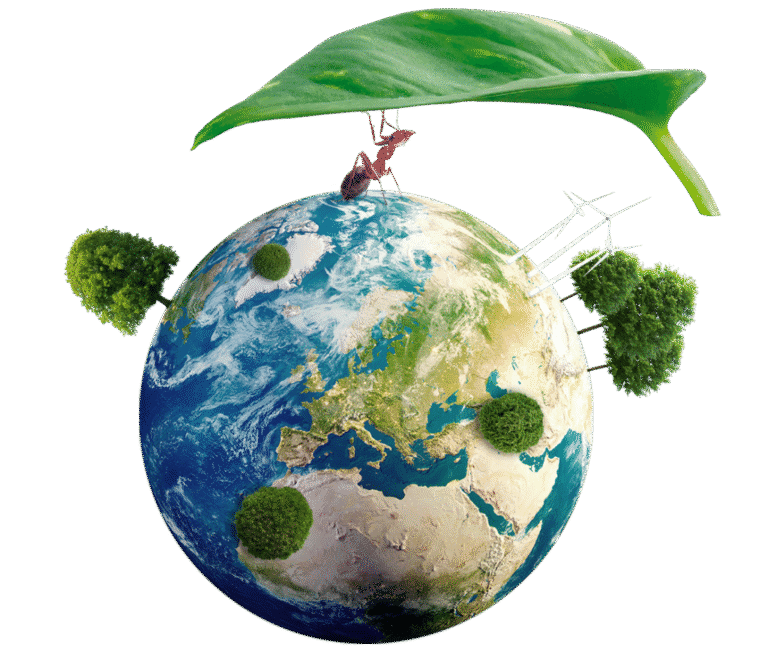
Inimeste eest
Inimeste terviseriskid tehismajapidamiste tõttu
Tehasekasvatus on inimestele suur terviserisk ning see tuleneb hoolimatust ja räpasest tegevusest. Üks tõsisemaid probleeme on antibiootikumide ülekasutamine loomadel, mis on nendes tehastes laialt levinud, et tõrjuda haigusi ülerahvastatuse ja stressirohketes tingimustes. Selle intensiivne kasutamine viib bakterite tekkeni, mis on antibiootikumide suhtes resistentsed, ning need kanduvad inimestele edasi otsesel kokkupuutel nakatunud loomadega, nakatunud toodete tarbimisel või keskkonnaallikate, nagu vee ja pinnase kaudu. Nende “superbakterite” levik on maailma tervisele suur oht, kuna see võib muuta nakkused, mida oli varem lihtne ravida, ravimitele resistentseks või isegi ravimatuks. Lisaks loovad tehasefarmid ideaalse keskkonna zoonoossete patogeenide – loomadelt inimestele ülekantavate haiguste – tekkeks ja levikuks. Sellised mikroobid nagu Salmonella, E. coli ja Campylobacter on räppades tehasefarmides tavalised ning nende levik suurendab nende esinemise tõenäosust lihas, munades ja piimatoodetes, põhjustades toidust tingitud haigusi ja puhanguid. Lisaks mikrobioloogilistele riskidele on tehasekasvatusega toodetud loomsetes toodetes sageli palju küllastunud rasvu ja kolesterooli, mis põhjustavad mitmeid kroonilisi haigusi, nagu rasvumine, südame-veresoonkonna haigused ja 2. tüüpi diabeet. Lisaks on kasvuhormoonide ülemäärane kasutamine loomadel tekitanud muret võimalike hormonaalsete häirete ja nende toodete tarbivate inimeste pikaajaliste tervisemõjude pärast. Tehasekasvatuse põhjustatud keskkonnareostus mõjutab kaudselt ka lähedalasuvate kogukondade tervist, kuna loomade jäätmed võivad imbuda joogivette ohtlike nitraatide ja bakteritega, põhjustades seedetrakti probleeme ja muid terviseprobleeme. Need ohud rõhutavad vajadust toidu tootmise viisi kiirelt muuta, et kaitsta rahvatervist ning soodustada ohutumaid ja säästvamaid põllumajandusmeetodeid.
Loomade ekspluateerimine on püsiv probleem, mis on meie ühiskonda vaevanud sajandeid. Alates loomade kasutamisest toiduks, riietuseks, meelelahutuseks,...
Viimastel aastatel on maailm näinud zoonootiliste haiguste kasvu, koos puhangutega nagu Ebola, SARS ja enamik...
Tänapäeva ühiskonnas on märkimisväärselt suurenenud nende inimeste arv, kes pöörduvad taimse dieedi poole. Olenemata...
Meie igapäevaste tarbimisharjumuste negatiivse mõju suurenedes keskkonnale ja loomade heaolule, eetiline...
Kaaluhalduse maailmas on pidev uus toitumine, toidulisandid ja treeningrežiimid, mis lubavad kiiret...
Ühiskonnana on meile pikka aega soovitatud tarbida tasakaalustatud ja mitmekesist toitu, et säilitada oma üldist tervist...
Loomade eest
Loomade kannatused tehasepõlludel
Tehasekasvatus põhineb kujuteldamatul julmusel loomade vastu, nähes neis pelgalt kaupu, mitte tunnetavaid olendeid, kes suudavad tunda valu, hirmu ja häda. Nendes süsteemides peetakse loomi kitsastes puurides, kus on väga vähe ruumi liikuda, veel vähem looduslike käitumismallide järgimiseks nagu karjatamine, pesitsemine või suhtlemine. Kitsad tingimused põhjustavad tõsiseid füüsilisi ja psühholoogilisi kannatusi, mille tulemuseks on vigastused ning kroonilise stressi seisundite esilekutsumine, millega kaasneb ebanormaalsete käitumismallide nagu agressiivsus või enesevigastamine teke. Emasloomade jaoks on tahtmatu paljunemise juhtimise tsükkel lõputu ning järglased eemaldatakse emadest mõne tunni jooksul pärast sündi, põhjustades nii emale kui ka noorloomale suuremat stressi. Vasikaid peetakse sageli eraldatult ning kasvatatakse eemal igasugusest sotsiaalsest suhtlusest ja sidemest emadega. Valusaid protseduure nagu saba lõikamine, nokkimine, kastreerimine ja sarvede eemaldamine tehakse ilma anesteesia või valu leevendamiseta, põhjustades tarbetuid kannatusi. Valik maksimaalse tootlikkuse kasuks - olgu selleks kiirem kasvutempo kanadel või suurem piimatoodang lehmadel - on iseenesest põhjustanud tõsiseid terviseprobleeme, mis on väga valusad: mastitis, elundite rikkeid, luude deformatsioone jne. Paljud liigid kannatavad terve elu räpastes, ülerahvastatud keskkondades, mis on väga vastuvõtlikud haigustele, ilma piisava veterinaararsti abita. Kui neil keelatakse päikesevalgus, värske õhk ja ruum, kannatavad nad tehase-taolistes tingimustes kuni tapmiseni. See pidev julmus tõstatab eetilisi probleeme, kuid toob esile ka selle, kui kaugel on tööstuslikud põllumajandustoimingud mistahes moraalsest kohustusest kohelda loomi lahkelt ja väärikalt.
Loomade ekspluateerimine on püsiv probleem, mis on meie ühiskonda vaevanud sajandeid. Alates loomade kasutamisest toiduks, riietuseks, meelelahutuseks,...
Meie igapäevaste tarbimisharjumuste negatiivse mõju suurenedes keskkonnale ja loomade heaolule, eetiline...
Viimastel aastatel on mõiste “küülikuhoidja” kasutatud nende pilkamiseks ja alandamiseks, kes kaitsevad loomade õigusi...
Ookean katab üle 70% Maa pinnast ja on koduks mitmekesisele vee-elustikule. Edasi...
Veganlus ei ole ainult toitumise valik – see kujutab endast sügavat eetilist ja moraalset pühendumust kahju vähendamisele ja...
Tehasepõllumajandus on muutunud laialt levinud praktikaks, muutes seda, kuidas inimesed loomadega suhtlevad ja kujundavad oma suhet nendega...
Planeedi eest
Jätkusuutlikkuse riskid tehasepõllumajandusest planeedi jaoks
Tehasekasvatus tekitab tohutu hulga riske planeedile ja keskkonnale, muutudes ökoloogia ja kliimamuutuste halvenemisel üheks peamiseks teguriks. Intensiivse põllumajanduse kõige mõjukamate keskkonnamõjude hulgas on kasvuhoonegaaside heitkogused. Loomakasvatus, eriti veiste oma, toodab tohutul hulgal metaani – intensiivset kasvuhoonegaasi, mis hoiab soojust atmosfääris väga efektiivselt võrreldes süsinikdioksiidiga. See on veel üks oluline tegur, mis aitab kaasa globaalsele soojenemisele ja kiirendab kliimamuutusi. Ülemaailmselt kujutab metsamaa massiline hävitamine loomade karjatamiseks või monokultuursete kultuuride, nagu sojauba ja maisi, kasvatamiseks loomade söödaks endast veel üht tehasekasvatuse võimsat poolt metsade hävitamisel. Lisaks planeedi võimekuse vähendamisele absorbeerida süsinikdioksiidi, häirib metsade hävitamine ökosüsteeme ja ohustab bioloogilist mitmekesisust, hävitades elupaiku lugematute liikide jaoks. Lisaks sellele suunab tehasekasvatus kriitilisi veevarusid, kuna nii palju vett on vaja loomadele, söödakultuuride kasvatamiseks ja jäätmete kõrvaldamiseks. Loomajäätmete mõtlematu maha loopimine saastab jõgesid, järvi ja põhjavett kahjulike ainetega nagu nitraadid, fosfaadid ja elujõulised organismid, mis viib vee saastumiseni ja surnud tsoonide tekkeni ookeanides, kus mereelu ei saa eksisteerida. Teine probleem on pinnase degradeerumine toitainete ammendumise, erosiooni ja kõrbestumise tõttu, mis on tingitud maa ülekasutamisest sööda tootmiseks. Lisaks sellele hävitab pestitsiidide ja väetiste intensiivne kasutamine ümbritsevat ökosüsteemi, mis kahjustab tolmeldajaid, elusloodust ja inimkogukondi. Tehasekasvatus mitte ainult ei kahjusta planeedi Maa tervist, vaid suurendab ka stressi loodusvarudele, takistades seeläbi keskkonna jätkusuutlikkust. Nende probleemide lahendamiseks on oluline üleminek jätkusuutlikumatele toidusüsteemidele, mis hõlmavad eetilisi kaalutlusi inimeste ja loomade heaolu ning keskkonna enda suhtes.
Kuna ülemaailmne rahvastik kasvab jätkuvalt, kasvab ka nõudlus toidu järele. Üks peamiseid valguallikaid...
Meie igapäevaste tarbimisharjumuste negatiivse mõju suurenedes keskkonnale ja loomade heaolule, eetiline...
Kariloomakasvatus on olnud tuhandeid aastaid inimtsivilisatsiooni keskne osa, pakkudes elutähtsat toiduallikat...
Ühiskonnana on meile pikka aega soovitatud tarbida tasakaalustatud ja mitmekesist toitu, et säilitada oma üldist tervist...
Tehasekasvatus, tuntud ka kui tööstuslik põllumajandus, on muutunud paljudes riikides valdavaks toidu tootmise meetodiks...
Tere, loomade sõbrad ja ökotajud inimesed! Täna sukeldume teemasse, mis ei pruugi olla...
Kaastundliku ja jätkusuutliku tuleviku ehitamine
- Ühtsuses unistagem tulevikku, kus tehasekasvatus, mis on loomi kannatanud, saab ajalooks, millest võime naeratades rääkida, kus samad loomad nutavad oma mineviku kannatuste pärast ning kus üksikisikute ja planeedi tervis on meie kõigi peamiste prioriteetide hulgas. Põllumajandus on üks peamisi viise, kuidas maailmas toitu toota; kuid süsteemil on ka halbu tagajärgi. Näiteks on loomade kogetav valu lihtsalt talumatu. Nad elavad kitsastes, ülerahvastatud tingimustes, mis tähendab, et nad ei saa oma loomulikke käitumisi väljendada ning veelgi hullem on see, et neid vaevavad lugematud valud. Loomakasvatus ei ole ainult põhjus, miks loomad kannatavad, vaid ka keskkond ja tervis on radaril. Antibiootikumide liigne kasutamine veistel aitab kaasa antibiootikumiresistentsete bakterite tekkele, mis ohustavad inimeste tervist. Loomad nagu lehmad on ka vee saastamise allikaks kahjulike kemikaalide vabastamise tõttu. Teisalt on loomakasvatuse edendamine metsade hävitamise kaudu ning kliimamuutused massilise kasvuhoonegaaside emissiooni tõttu domineeriv probleem.
- Meie usk on maailmas, kus iga siin olev loom on austatud lugupidamise ja väärikusega ning esimene valgus viib sinna, kuhu inimesed lähevad. Meie valitsuse, haridusprogrammide ja strateegiliste partnerluste kaudu oleme võtnud tõe rääkimise teema tehasepõllundusest, nagu väga valusast ja julmast kohtlemisest loomade suhtes, kellel orjatena pole õigusi ja kes piinatakse surnuks. Meie peamine eesmärk on pakkuda inimestele haridust, et nad saaksid teha tarku otsuseid ja tegelikult tuua kaasa tõelisi muutusi. Humane Foundation on mittetulundusasutus, mis töötab lahenduste esitamise nimel paljudele probleemidele, mis tulenevad tehasepõllundusest, jätkusuutlikkusest, loomade heaolust ja inimeste tervisest, võimaldades inimestel oma käitumist oma moraalsete väärtustega kooskõlla viia. Tootes ja edendades taimepõhiseid asendusi, arendades tõhusaid loomade heaolu poliitikuid ja luues võrgustikke sarnaste organisatsioonidega, püüame pühendunult luua keskkonda, mis on nii kaastundlik kui ka jätkusuutlik.
- Humane Foundation on ühendatud ühise eesmärgiga – maailm, kus tehasefarmide loomade väärkohtlemine on 0%. Olgu selleks murelik tarbija, loomaarmastaja, teadlane või poliitikakujundaja, olge meie külaliseks muutuste eest võitlemisel. Nagu meeskond, saame luua maailma, kus loomi koheldakse lahkusega, kus meie tervis on esmatähtis ja kus keskkond on jäetud puutumata tulevaste põlvkondade jaoks.
- Veebileht on tee teadmiseni tehase päritoluga farmi tegelike tõdede kohta, humaansest toidust mõne muu valiku kaudu ja võimalusest kuulda meie viimastest kampaaniatest. Pakume teile võimalust osaleda mitmel viisil, sealhulgas jagada taimepõhiseid eineid. Samuti on üleskutse tegutsemiseks rääkida ja näidata, et hoolite heade poliitikate edendamisest ja oma kohaliku naabruskonna harimisest jätkusuutlikkuse tähtsuse kohta. Väike tegu, mis suurendab elektrilisust, julgustab teisi olema osa protsessist, mis toob maailma jätkusuutliku elukeskkonna ja rohkem kaastunnet.
- See on teie pühendumus kaastundele ja teie tung, mis muudab maailma paremaks kõige rohkem. Statistika näitab, et oleme staadiumis, kus meil on jõud luua oma unistuste maailm, maailm, kus loomadega ollakse empaatiatundva suhtumisega, inimeste tervis on parimas seisundis ja maa on jälle elujõuline. Olge valmis eelseisvateks aastakümneteks, mis on täis kaastundet, õiglust ja head tahet.

Lahendus
On ainult 1 lahendus...
Lõpetage elu Maal hävitamine.
Selleks, et Maa taastaks oma loomuliku tasakaalu ja saaks taastuda tehasefarmide poolt põhjustatud keskkonnakahjust, peame maa loodusesse tagasi andma ning lõpetama loomade ja ökosüsteemide ekspluateerimise.
Tsink
[1] https://et.wikipedia.org/wiki/Vee_jalaj%C3%A4lg#Vee_jalaj%C3%A4lg_toodetes_(p%C3%95llumajanduslik_sector)
[2] https://wwf.panda.org/discover/knowledge_hub/where_we_work/amazon/amazon_threats/unsustainable_cattle_ranching/
[3] https://www.weforum.org/stories/2019/12/agriculture-habitable-land/
[4] https://www.fao.org/4/a0701e/a0701e00.htm
[5] https://ourworldindata.org/data-insights/miljardeid kanu, parte ja sigu tapetakse iga aasta liha pärast
[6] https://www.worldanimalprotection.org.uk/latest/blogs/tehasekasvatuse-keskkonnamõjud/
[7] https://www.feedbusinessmea.com/2024/12/03/global-feed-industry-to-utilize-1048m-tonnes-of-grains-in-2024-25-igc/
[8] https://et.wikipedia.org/wiki/Karvloomad#Raport
[9] https://www.who.int/news/item/07-11-2017-stop-using-antibiotics-in-healthy-animals-to-prevent-the-spread-of-antibiotic-resistance
[10] https://et.wikipedia.org/wiki/Kala_tapmine#Numbrid
[11] https://www.unep.org/news-and-stories/press-release/our-global-food-system-primary-driver-biodiversity-loss
[12] https://ourworldindata.org/land-use-diets

